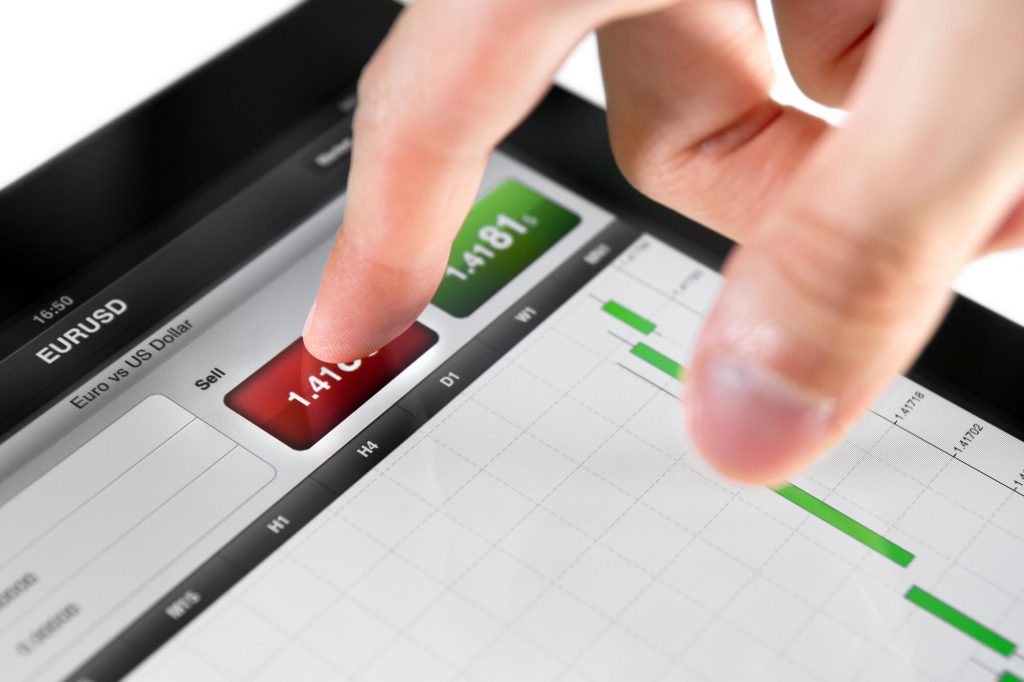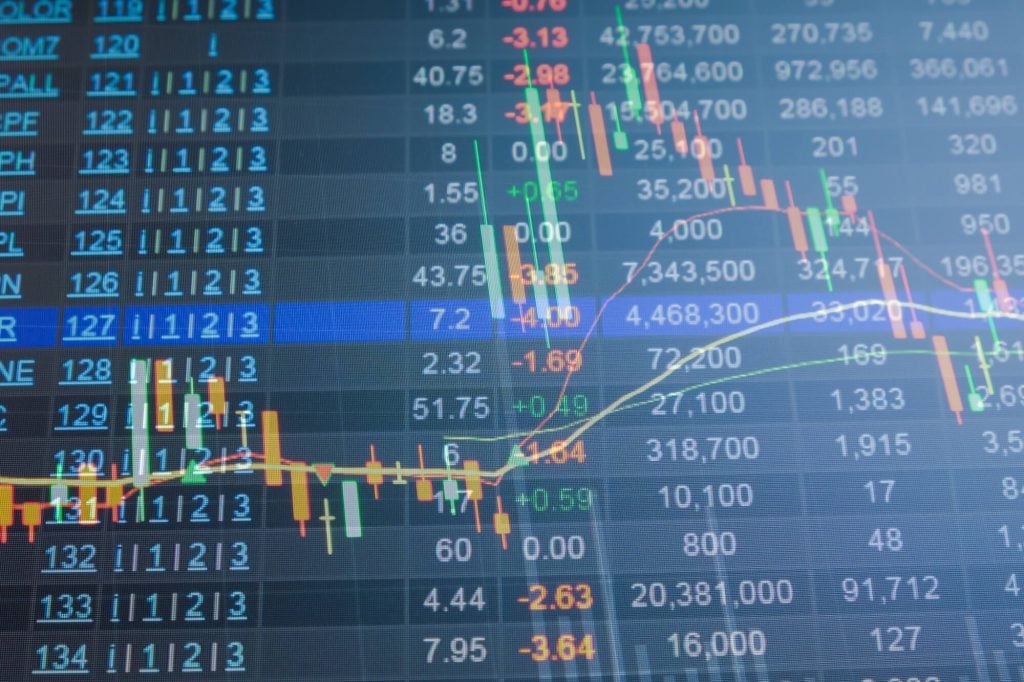
The stock market is a reflection of human nature as much as it is of the economy.
When we see a lot of people buy a product or follow a celebrity’s Twitter account, we’re more enticed to do so ourselves. When we see a lot of people stay away from a local restaurant or abandon a losing sports team, we’re more inclined to do the same.
All of that can change. A product might be bad, that Twitter account may be fake, a restaurant may have marketing problems, and that team can turn it around. And human nature will rear its head again.
The stock market follows that pattern, too. Elation and panic are strong motivators. Investors rush in to buy a hot stock and scramble to sell it when it shows signs of decline.
They may end up being good decisions, but they’re still based on emotion — the successful investor’s sworn enemy.
Stock market success is based on a careful analysis of several factors. Buying in on a stock when the price is too high will curtail your profits. Cashing out when it’s too low or when it’s only going through a small dip before rising again can hit your profits, too.
Traders earn their success by knowing exactly when to buy and sell certain positions. That knowledge is based on very specific data, careful monitoring of share prices, and the ability to spot relevant trends before they happen.
That’s how investors find the best entry and exit indicators — the specific points where it’s best to buy and sell their shares. The differences can be subtle.

Why Finding the Best Entry Point Matters
Conventional wisdom says to buy into a stock when the price is as low as it can get. Of course, that’s true. What’s hard is knowing when it’s gotten to that point.
This sounds counter-intuitive, but it’s practical advice: When you’re deciding whether or not to enter a position, its current price shouldn’t be the first data point you look at. It should probably be closer to the last.
Traders should instead look at deeper, more established data first. They’ll get to know the company’s history, its leadership structure, its market share, and sound analysts’ projections.
Day trading entry points are more about a given stock’s levels of support and resistance, rather than price. It’s understanding which trends are likely to stick and which ones are temporary conditions. It’s executing at a comfortable point that maximizes your profit potential.
So while getting in on a stock at the right price level is certainly an important factor, traders don’t just consider price points. They’re more interested in price patterns. That subtle difference has big implications.
Why Finding the Best Exit Point is Important
Certainly, some of the same factors apply to knowing when to exit a trade. Support, resistance, and patterns all apply to exit strategies as well as entry points. There are different approaches to consider, though.
The entry point is the beginning of a trade. You figure out the best time to jump in and invest to maximize gain potential. You’re spending money at this stage, not making money, as you’ll hopefully do when you exit.
Finding an exit strategy isn’t the same as setting a stop-loss order, where you sell shares after they reach a certain low price or percentage. A stop-loss is a protective measure. An exit point is called a “take-profit” order is a profit-making measure. You need both for a sound exit plan.
It’s a little trickier to determine when to exit a take-profit order. The goal is to find a point above the price you paid where you expect prices will plateau and recede.
Another difference is that while you always have one entry point, you can have multiple exit points on a trade. You can sell part of your position when prices hit a certain level and hold on to the remainder if you expect prices to go higher. And you can have different strategies for each.
What to Use When Finding Entry and Exit Indicators
The key to finding the best entry and exit points is heavy, daily analysis of a stock’s price movement — the basic chart that every security has.
There are two defined analysis “mindsets” that all investors use to some degree.
Day traders rely on technical analysis. That’s the quantitative study of a stock’s price and trading volume history. An investor watches how a stock’s price fluctuates and looks for specific patterns or trends. Combining this data with their knowledge of market behavior and investor psychology, the trader determines when to strike.
The opposite of technical analysis is fundamental analysis. It’s largely associated with long-term trading. Fundamental analysis is a more qualitative examination of a company’s intrinsic value: How leadership is structured, which trends are happening in the industry of a given company, current economic conditions, and so forth.
Finding the right entry and exit indicators is part of technical analysis. It works strictly with charts and data. Day traders employ fundamental analysis, too, but nowhere near as much as technical analysis. They watch charts like hawks. They look at long-term price histories just like everyone, but they keep a very close eye on intraday activity — something that “buy-and-hold” investors usually don’t need.
Best Entry and Exit Indicators
Moving Averages
The entry and exit indicator that’s perhaps simplest to understand is a common measurement on every commodity’s graphs: The moving average. It’s a general indicator of a stock’s price movement over a given time.
If you were to look and record a stock’s every price change on a graph, you’d see a lot of stark up-and-down lines. The moving average simplifies the information and shows a trend. Traders refer to the moving average to “level out” a stock’s overall price movement, filtering out sharp and sudden price jumps or drops.
The moving average is a very useful indicator because it gives a more solid impression of a company’s overall performance. The unit of time you choose for a moving average can be anything, but for traders, lengths of 10, 20, 30, 100, or 200 days are popular. Day traders frequently look at moving averages in terms of minutes.
Support and Resistance
The easiest way to use the moving average as a tool for entry points is to determine the support or resistance attached to a commodity.
Support for a stock is identified when a downtrend is expected to stop. The share price is low enough that more investors buy in, raising the stock price over time. If a moving average rises, that indicates a gain in support. When the price drops closer to an up-trending moving average, it might be a good time to buy.
Resistance is the opposite. When the stock price hits a peak and begins to level out, it indicates that investors are shying away from buying more shares. The price may simply stabilize for a while, at which point, you’d decide whether to hold onto it or cash in. If the price starts to decline, you may consider it to be an exit indicator.

Crossovers
Another way to use the moving average as an indicator is to compare two different periods — perhaps a 20-day moving average and a 100-day moving average. Major online brokerages have chart functionalities built in that can allow you to do this easily.
The thing to look for with this method is the point at which the shorter-term average crosses the longer-term average. If the 20-day average has been underperforming a 100-day average but finally crosses it one day, it may be a sign to buy the stock. This is popularly known as “the golden cross.”
The converse is also true. When the 20-day average falls below the 100-day, it’s a sign to sell. This is known, a bit dramatically, as “the death cross.”
Moving averages are a very helpful but basic tool. Like all the indicators in this article, it’s always best to confirm the trends shown by the market average with another indicator.
Bollinger Bands
Your online brokerage should also offer chart visuals in the form of Bollinger bands. This is a measurement of a stock’s volatility.
It’s a cross between three bands: A simple moving average (SMA) and two other bands above and below it. These two additional bands are standard deviations that indicate how much the stock price may differ from its true value.
What Bollinger bands tell us is whether a stock is being overbought or oversold. When the share price dips below the bottom Bollinger band, it’s potentially being undervalued by investors and is due for a rebound. That’s an entry point.
As for using Bollinger bands to sell, you probably know where this is going: If the price exceeds the upper Bollinger band, it could be headed for a pullback. You may want to exit the position at this point.
Another way to use Bollinger bands is to see how shallow or broad they are to gauge volatility. If the band is narrow over a long period, that indicates it’s pretty consistent and unspectacular. Bigger, taller band stretches show that there has been more action.
The Ichimoku Cloud
The Ichimoku Cloud is an intimidating beast of an indicator with five different data points. It’s a little different from other indicators in that it usually extends past the present date, going a little bit into the future to project the momentum of the stock in question.
The data calculations in the Ichimoku Cloud include:
- A 9-period moving average
- A 26-period moving average
- The average of the two above averages
- A 52-period average
- A lagging closing price
We don’t have the time to explain how all those are calculated. But the most obvious, eye-catching part of this chart is the cloud, which displays the difference between the 9- and 26-period averages.
When the stock price is above the cloud, that indicates it’s trending up; when it’s below the cloud, it’s down. If the stock price is inside the cloud, that means nothing is trending or that there’s a transition coming soon.
The cloud continues past the present date and a little into the future — not too far, but at least a few weeks. That’s an estimation of how the trend will play out, and it’s another indicator that could help you time the market.
The moving averages can be used to find entry and exit points. If the 26-period moving average exceeds the 9-period, it’s a sign that it could be time to buy in. If the 26-period MA drops below the 9-period, it may be time to pull back.
Relative Strength Index
The relative strength index (RSI) is commonly used in conjunction with the Ichimoku Cloud. It’s another tool for measuring a stock’s momentum.
The RSI uses a moving date range — 14 periods is usually the standard — to arrive at a number between 0 and 100. The number very roughly corresponds to recent price movements, looking similar to, but not exactly like the moving price of the stock.
The key numbers on the RSI are 30 and 70. If a stock’s RSI dips below 30, it may be considered undersold: Its trading price (and probably volume) should be higher than it is. That could mean it’s time to enter into the position.
If the RSI is over 70, that means investors are overvaluing the stock, and exiting the position might be a good idea.
Use More Than One Indicator
There are several different indicators besides the ones we’ve mentioned in this post; you’re certainly welcome to find and use as many as you like.
Try to use at least two (or more if you can navigate the data load). No indicator is a surefire predictor in and of itself. If you find an uptrend in the moving average, seek to back that trend up with the Bollinger band and/or the Ichimoku Cloud (or another indicator). The RSI is always a good backup, as well.

The Gorilla Trades Formula for Success
Gorilla Trades uses a unique proprietary set of indicators to make our stock picks. More than that, we give our customers the best times to enter and exit positions to earn big profits. Get a free trial to find out more.
